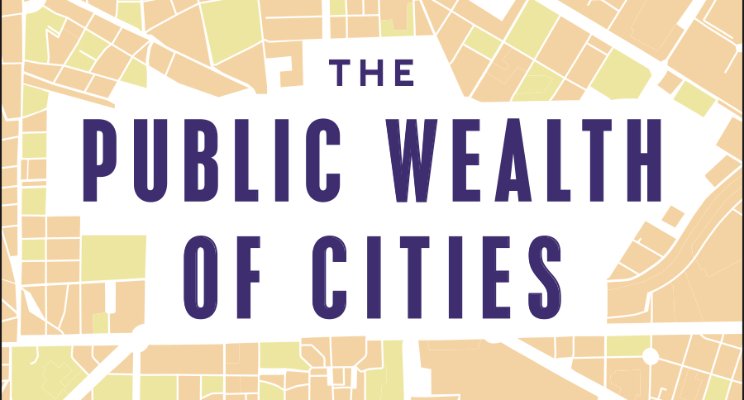Physical Address
304 North Cardinal St.
Dorchester Center, MA 02124
Physical Address
304 North Cardinal St.
Dorchester Center, MA 02124

Many readers of this blog know that government subsidizes driving- not just through road spending, but also through land use regulations that make walking and transit use inconvenient and dangerous. Gregory Shill, a professor at the University of Iowa College of Law, has written an excellent new paper that goes even further. Of course, Shill discusses anti-pedestrian regulations such as density limits and minimum parking requirements. But he also discusses government practices that make automobile use far more dangerous and polluting than it has to be. For example, environmental regulations focus on tailpipe emissions, but ignore environmental harm caused by roadbuilding and the automobile manufacturing process. Vehicle safety regulations make cars safer, but American crashworthiness regulations do not consider the safety of pedestrians in automobile/pedestrian crashes. Speeding laws allow very high speeds and are rarely enforced. If you don’t want to read the 100-page article, a more detailed discussion is at Streetsblog.

Five years ago everything in California felt like a giant (land use policy) dumpster fire. Fast forward to today we live in a completely different world. Yimby activists have pushed policy, swayed elections, and dramatically shifted the overton window on California housing policy. And through this process of pushing change, Yimbyism itself has evolved as well. Learning by Listening Yimbys started out with a straightforward diagnosis of the housing crisis in California. They said, “…housing prices are high because there’s not enough housing and if we want lower prices, we need more housing”. And they were, of course, completely right…at least with regards to the specific problem-space defined by supply, demand, and the long run. As Yimby’s started coalition building, though, they began recognizing related, but fundamentally different concerns. For anti-displacement activists, the problem was not defined by long-run aggregate prices. It was instead all about the immediate plight of economically vulnerable communities. Increasing supply was not an attractive proposal because of the long time horizons (years, decades) and ambiguous benefit for their specific constituencies. Yimbyism as Practical Politics Leaders in the Yimby movement could have thrown up their hands and walked away. But they didn’t. Instead they listened and developed a yes and approach. The Yimby platform still embraces the idea that, long run, we need to build more housing, but it now also supports measures to protect those who’ll fall off the housing ladder tomorrow without a helping hand today. Scott Weiner’s SB50 is a great example of this attitude in action. If passed, the bill will reduce restrictions on housing construction across the state. It targets transit and job rich areas and builds in eviction protections to guard against displacement. At a high level, it sets up the playing field so that renters in a four story […]

With the Democrats scrambling to come up with a legislative agenda after their November takeover of the House of Representatives, an old idea is making a comeback: a “Green New Deal.” Once the flagship issue of the Green Party, an environmental stimulus package is now a cause de celebre among the Democratic Party’s progressive wing. While it looks like the party leadership isn’t too receptive to the idea, newly-elected Representative Alexandria Ocasio-Cortez has spearheaded legislation designed to create a “Select Committee for a Green New Deal.” The mandate of the proposed committee is ambitious, possibly to a fault. At times utopian in flavor, the committee would pursue everything from reducing greenhouse gas emissions to labor law enforcement and universal health care. A recent plan from the progressive think tank Data for Progress is more disciplined, remaining focused on environmental issues, with clearer numerical targets for transitioning to renewable energy and reducing greenhouse gas emissions. Yet in all the talk about a Green New Deal, there’s a conspicuous omission that could fatally undermine efforts to reduce greenhouse gas emissions: little to no focus is placed on the way we plan urban land use. This is especially strange considering the outsized role that the way we live and travel plays in raising or lowering greenhouse gas emissions. According to the Environmental Protection Agency (EPA), transportation and electricity account for more than half of the US’ greenhouse gas emissions. As David Owen points out in his book “Green Metropolis,” city dwellers drive less, consume less electricity, and throw out less trash than their rural and suburban peers. This means that if proponents of the Green New Deal are serious about reducing carbon emissions, they will have to help more people move to cities. One possible reason for this oversight is that urban planning […]
This book is an attack on current city planning and rebuilding. This is how Jane Jacobs opened her 1961 classic “The Death and Life of Great American Cities”. It wouldn’t be an inappropriate opener for Alain Bertaud’s upcoming “Order Without Design”. While Jacobs was an observer of how cities work and a contributor to new concepts in urban economics, Bertaud goes a step further. His book brings economic logic and quantitative analysis to guide urban planning decision-making, colored by a hands-on, 55-year career as a global urban planner. His conclusion? The urban planning practice is oblivious to the economic effects of their decisions, and eventually creates unintended consequences to urban development. His goal with this book is to bring economics as an important tool to the urban planning profession, and to bring economists closer to the practical challenge of working with cities. Maybe you have not heard about Alain Bertaud before: at the time I am writing this article, he has only a few articles published online, no Wikipedia page or Twitter account, and some lectures on YouTube – and nothing close to a TED talk. The reason is that instead of working on becoming a public figure, Bertaud was actually doing work on the ground, helping cities in all continents tackle their urban development problems. His tremendous experience makes this book that delves into urban economics surprisingly exhilarating. As an example, Bertaud shows a 1970 photo from when he was tracing new streets in Yemen using a Land Rover and the help of two local assistants who look 12 years old at most, a depiction of a real-life Indiana Jones of urban planning. In this book, mainstream urban planning “buzzwords” such as Transit-Oriented Development, Inclusionary Zoning, Smart Growth and Urban Growth Boundaries are challenged with economic analysis, grounded on […]
Some urbanists have become skeptical about the future of autonomous vehicles even as unstaffed, autonomous taxis are now serving customers in Phoenix and Japan. Others worry that AVs, if they are ever deployed widely, will make cities worse. Angie Schmitt posits that allowing AVs in cities without implementing deliberate pro-urban policies first will exacerbate the problems of cars in urban areas. However, cars themselves aren’t to blame for the problems they’ve caused in cities. Policymakers created rules that dedicated public space to cars and prioritized ease of driving over other important goals. Urbanists should be optimistic about the arrival of AVs because urbanist policy goals will be more politically tenable when humans are not behind the wheel. To avoid repeating mistakes of the past, policymakers should create rules that neither subsidize AVs nor give them carte blanche over government-owned rights-of-way. Multiple writers have pointed out that city policymakers should actively be designing policy for the driverless future, but few have spelled out concrete plans for successful driverless policy in cities. Here are three policies that urban policymakers should begin experimenting with right away in anticipation of AVs. Price Roadways Perhaps the biggest concern AVs present for urbanists is that they may increase demand for sprawl. AVs may drastically reduce highway commute times over a given distance through platooning, and if people find their trips in AVs to be time well-spent, when they can work, relax, or sleep, they may be willing to accept even more time-consuming commutes than they do today. As the burden of commuting decreases, they reason, people will travel farther to work. However, the looming increase in sprawl would be due in large part to subsidized roads, not AVs themselves. If riders would have to fully internalize the cost of using road space, they would think twice […]
New York politicians’ attacks on Airbnb are now getting national press; they argue that because Airbnb units could be used for long-term rentals, Airbnb reduces the housing supply and thus raises rents. But just as a matter of principle, this claim leads to absurd results. The logic underlying the claim is: a housing unit that is used for short-term rentals such as Airbnb could be easily used for long-term rentals. Thus, Airbnb reduces the long-term housing supply. But this argument proves too much. If you own a house, your house could also be used for long-term rentals. If you have a spare room, you could rent out that spare room. And even if you rent out every room in the house, your house sits on land that could be used for a much larger number of rental units. Since there are far more single-family houses than there are Airbnb units, bulldozing every house in the city would increase housing supply to a much greater extent than would outlawing Airbnb. Does this mean the city should bulldoze your house to build more rental housing?

The Center for Market Urbanism released its first policy report in partnership with Abundant Housing Los Angeles. The paper, written by The Center for Market Urbanism’s Nolan Gray and Emily Hamilton, recommends eliminating minimum parking requirements as part of DTLA 2040, a process which will update both the Central City and Central City North community plans. The draft concept for the DTLA 2040 plan calls for eliminating parking requirements for the Central City and Central City North neighborhoods. This would build upon the success of Los Angeles’ adaptive reuse, allowing new developments to facilitate affordable, dense, walkable neighborhoods. The paper discusses the history of parking requirements, burdens and damage caused by current parking requirements, and benefits of reforms: Combined with demand-based pricing for on-street parking, the elimination of parking requirements will allow for downtown neighborhoods that are more walkable while also reducing congestion for drivers. Read the Center for Market Urbanism/Abundant Housing LA Policy Paper here The Center for Market Urbanism is a 501c3 organization dedicated to expanding choice, affordability, and prosperity in cities through smart reforms to U.S. land-use regulation. Abundant Housing LA is 501c3 organization which is committed to advocating for more housing. We want lower rents and a more sustainable and prosperous region, where everyone has more choices of where to live and how to pursue their dreams. LA is one of the most diverse, vibrant cities in America, and we are fighting to keep it that way for current Angelenos, our children, and those who come here to pursue their dreams.
The battle lines being drawn for the SB 827 debate is perhaps the clearest example ever of the strange bedfellows that align on land use politics. Tenant rights activists stand in opposition to preemption of local land-use regulations with landlords and owners of suburban single family homes. In The Future and Its Enemies, Virginia Postrel develops a dynamist-stasist lens for understanding policy debates. Dynamists are generally accepting of new ideas and innovation. They view the freedom to experiment as integral to the learning process that allows quality of life to improve over time. Rather than focusing on the distribution of income that results from innovation, dynamists’ concern is that life is getting better for everyone, most importantly the lowest income people. Stasists occupy the other end of the divide and come from two different perspectives. First, they may appreciate the privileges that the current law provides them. They don’t want to see the social upheaval that greater economic mobility could bring about. Second, they may be technocrats who do have a vision for a future that they think will be better than the present but want to achieve it only through a government-led plan. Each opposes the decentralized processes consumers and producers use to solve their own problems. The dynamist-stasist division applies to all areas of economic activity, but “not in my backyard” is the stasist “rallying cry.” Postrel’s framework is useful for understanding why opposition to upzoning unites groups that seem to have opposing politics. In the case of SB 827, stasists include technocrats who want to see increased access to housing, but only if new housing is rent controlled, subsidized, or government built, and traditional NIMBYs. Pessimism about change unites stasists of all stripes. They’re united in their view that new housing supply will result in worse neighborhoods rather than better ones. People who don’t want to […]
If you happen to visit Egypt and find yourself in the famous Tahrir Square, you might be puzzled: how could this space accommodate two million protesters? In fact, the square looked different at the time of the Arab Spring, up until the new military government ringed its central part with an iron fence. A similar transformation happened with the Pearl roundabout in the capital of Bahrain where demonstrators used to gather — it was turned into a traffic junction. In my hometown, Moscow, the square where millions called for the end of Soviet rule in 1991 now houses an hideous shopping mall. For a pro-liberty movement to raise its head, Twitter is not enough: face-to-face contact is crucial. That is why when oppressive governments want to destroy civil society, they destroy public spaces. Street markets, green squares and lively parks (think of the iconic Hyde Park corner) are places where citizens meet, negotiate and slowly learn to trust each other. Joseph Stalin knew it well, hence he made sure that city dwellers had no public spaces to socialise in. The results were devastating: chronic mistrust that post-communist societies are yet to overcome. Today, 30 years after the fall of the Berlin Wall, the levels of social capital in Dresden and Leipzig are still lower than in Munich and Hamburg, which bears its economic as well as political costs. One study shows that residents living in walkable neighbourhoods exhibit at least 80% greater levels of social capital than those living in car-dependent ones. That is something to consider, given that only a half of Brits know their neighbour’s name. The economic benefits are also clear: improved walking infrastructure can increase retail sales by 30%. London has witnessed it on Oxford Street where the creation of a Tokyo-style pedestrian crossing led to a 25% increase in turnover in the adjacent stores. In the […]

The Public Wealth of Cities by Dag Detter and Stefan Fölster proposes a series of reforms to improve municipal finances. The authors lay out guidelines for creating urban wealth funds (UWFs) and argue that financial stability is key to societal success. Detter and Fölster first call for basic financial competency. According to the authors, most cities don’t even know what they actually own. Real estate and equipment are often owned directly by individual departments with no central record to provide a bird’s eye view of a city’s assets as a whole. When this is the case, good asset management becomes impossible because no one knows what they’re managing. The authors also point out the need for cities to decide what is and is not a commercial asset. Where administrators designate an asset as commercial, maximizing ROI should supersede all other objectives. That doesn’t mean everything a city owns has to be managed to turn a profit, but where a piece of real estate or a facility is meant generate income, it ought to be managed explicitly to that end. Professional financial planning is Detter and Fölster’s third major prescription. They argue that cities should hire professional asset managers to oversee their portfolios and that these managers should be shielded from the democratic process. They go on to make a very public choice argument that elected officials have inappropriately short time horizons and that pressure to please constituents can lead to decisions at odds with the long term sustainability of municipal finances. After developing that line of reasoning, they provide Singapore as an example of a municipality that does this pretty well. In terms of the ideas presented, I loved the book. It touches on the organizational challenges of getting municipal finance right while speaking to what execution has […]